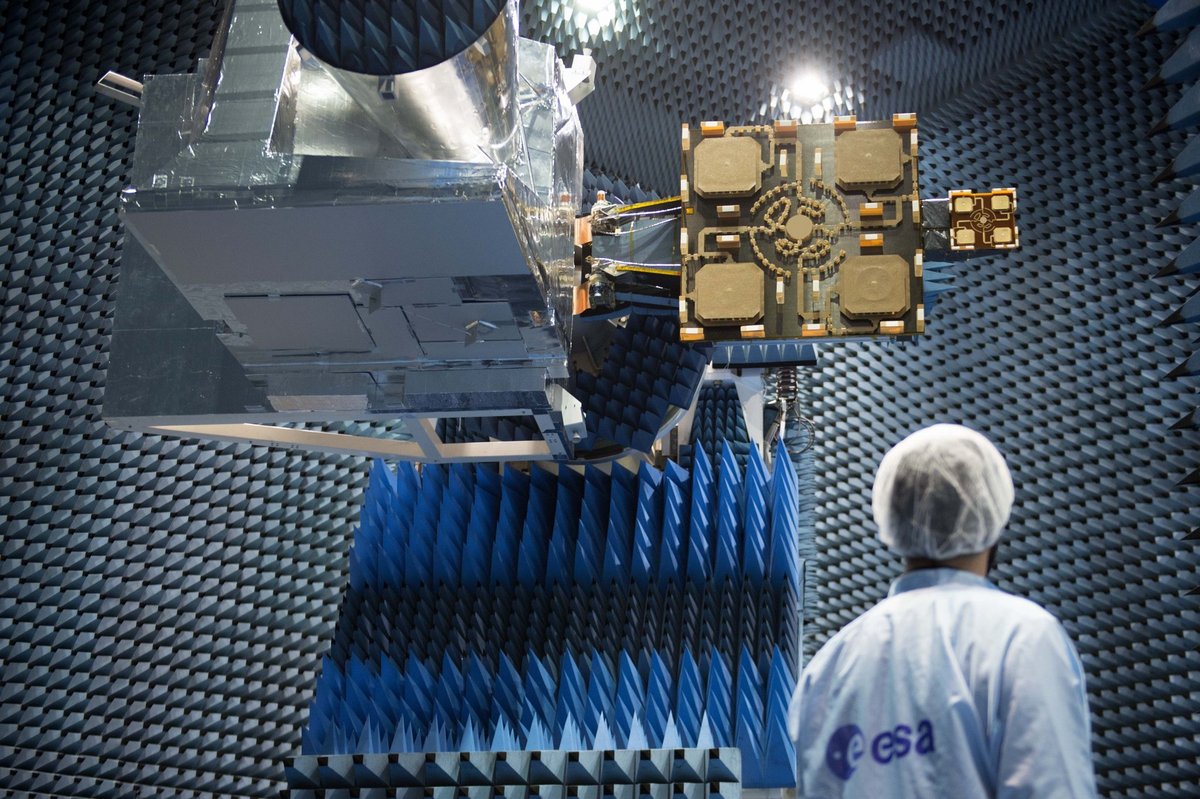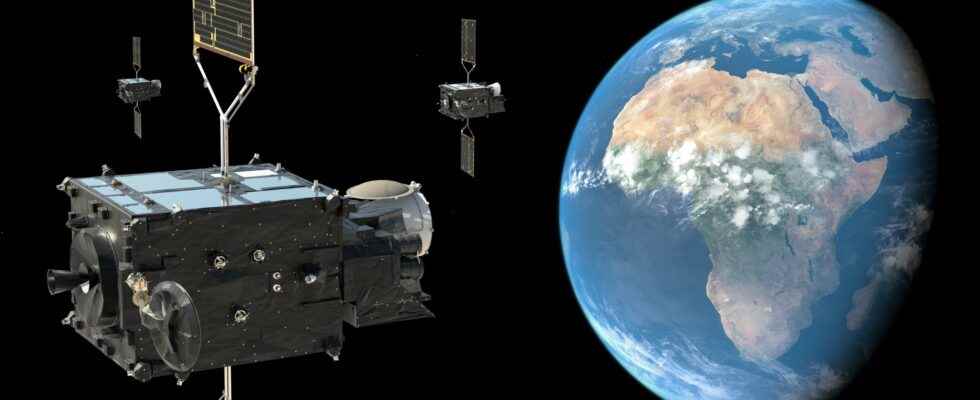He must take off from Guiana Space Center December 13: MTG-I1 is the first of a new generation of European meteorological satellites. In geostationary orbit, it will observe the globe and send more data than its predecessors… while being more precise and detecting lightning strikes.
The MTG family represents the next 20 years of weather records in geostationary orbit.
The change is now
The transition will take place soon. After 20 years of operations of the MSG (Meteosat second generation) satellites in geostationary orbit, the first unit of the MTG constellation (Meteosat third generation, not very original) is about to take off. As we write these lines, MTG-I1 is already sheltered under the fairing of the Ariane 5 rocket, in preparation at the Guiana Space Center.
Take-off is scheduled for December 13 at 9:30 p.m. (Paris time), and it represents more than a decade of preparation, for the teams of the European operator of meteorological satellites EUMETSAT as for the industrialists who took care of the project. , in particular Thales Alenia Space. It must be said that under the black protective layers, it is a large 3.6 ton weather satellite which is ready to operate for at least 15 years…
Goodbye MSG, hello MTG
Let’s retrace our steps a bit. Indeed, it is perhaps not the best-known agency in Europe, but EUMETSAT (European Organization for the Exploitation of Meteorological Satellites) has been operating for decades a real center of excellence with a succession of meteorological satellites of world-renowned data quality.
In partnership with the ESA, which develops the satellites, EUMETSAT is a world heavyweight which has two families in orbit: that of geostationary units and that, more recent, of satellites in low orbit. It is the one located at an altitude of 36,500 kilometers that interests us here. It is now made up of four MSGs whose replacement is beginning. The first of the MSG satellites, sent into orbit in 2002, was retired this year. For the remaining three, this should be staggered until around 2033, as the MTGs arrive.
Faster, stronger, bigger
The first difference between the old generation and the new is very visible: MSGs are satellites that use an old (but quite reliable) method of stabilization and rotational operation. This gives them a slight look of a washing machine drum, even if these satellites only turn at 100 rpm.
MTG-I1 will not spin. It has the more classic shape of the satellites of recent decades and is stabilized on 3 axes, with its sensors permanently facing the Earth. It is also heavier, with more complex instruments and extra fuel. It’s that it will take time to replace all the old units…
There were four MSGs, so there will be four MTG-Is, to which EUMETSAT has decided to add two MTG-S satellites, I for images and S for sounders. The latter are indeed equipped with a hyperspectral infrared sensor capable of probing the different layers of the atmosphere.
A high performance imaging sensor
MTG-I1 is therefore both a new meteorological observation platform and the first of a large family. The pressure is strong on the shoulders of the different teams!
Once in place in its orbit at the equator above central Africa, it will have to rely on its two main instruments, and in particular on the FCI imager (for Flexible Combined Imager). Derived from that used for the old generation of satellites, the FCI produces images in 16 different frequency bands ranging from visible to thermal infrared, all with a resolution over the entire terrestrial hemisphere that will be line of sight, 0.5 to 2 kilometers accuracy. On top of that, it is able to “scan” a hemisphere and send the full image in 10 minutes, or focus on Europe producing a more accurate image in 2 minutes and 30 seconds. Basically, the gain for images compared to the previous generation is 5 minutes for a complete image, with twice the resolution. All weather models and map visualizations will benefit from this.

Oh, there’s a storm!
In addition, MTG-I1 is able to catch lightning, unlike its predecessors. Lightning strikes are of great interest to meteorologists, and tracking storm signs is as complex as it is interesting. With its “Lightning Imager” instrument, the satellite will use four small telescopes with detectors that operate at 1,000 images per second to track lightning on the European and African continents as well as near the coasts.
This new addition is highly anticipated, especially in the current context. Indeed, 2022 is a record year in France for storms, and many models predict an increase in extreme weather events in the years to come. Better day-to-day weather observation to better understand the evolution of the continental and global climate, and to better manage future models, is part of the EUMETSAT and ESA roadmap. MTG-I1 is an essential brick of this building! The first MTG-S satellite is expected in 2024. And by then, the capabilities will also have improved in low orbit…
Source : ESA

2